Bringing in the New Year
On New Year's Eve many places will celebrate with traditional fireworks so I thought it might be fun in this week's post to give some tips on how I photograph them. When I am going out for a specific photo shoot, I get my equipment ready and packed the day before. To photograph fireworks in late December when it is dark and cold, I will err on the safe side and have extra batteries, the cold weather and longer exposures will drain batteries fast. Also included are additional memory cards, a cable release and a small flash light. The cable release will prevent camera shake and allows me to watch the display while I press the shutter. A flash light will come in handy if you need to change any camera setting.
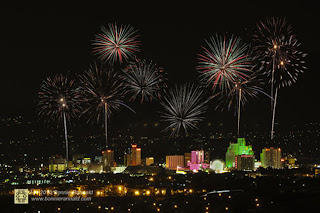
Arriving early is important for scouting out a location with a clear view, up wind of the fireworks, away from tree branches and artificial lighting which could all interfere with the exposures. Since a tripod is a must, I will stay away from crowds where someone could trip over the legs. If you are not able to use a tripod, you can place the camera on the top of a car or some other stationary object. The wind direction can cause problems when the smoke and haze obscures the clarity of fireworks.
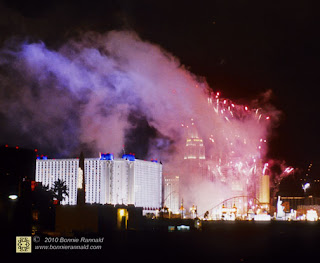
I will pre-set my camera before hand so I do not have to be fumbling around in the dark. With my D90, I use a low ISO of 200 and shoot in the manual setting with the shutter speed on bulb. With the cable release, I hold the shutter open for 1-4 seconds without overexposing the image. The aperture that I prefer to use is f/8, which is in the midrange. I always use the RAW setting for picture quality. And with fireworks, you should use the highest quality setting possible to reduce the amount of compression on your photos. JPEG compression degrades image quality. My preferred lens for fireworks is the Nikon 35-70mm 2.8 which gives me a pretty good range. A wider angle lens, without getting too wide, is better for catching more of the action.
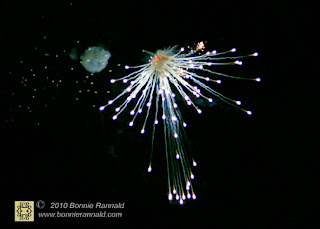
Auto focus doesn't work well for fireworks, so I pre-focus on an object close to where the fireworks will be exploding and use manual focus. I will check the camera's monitor often to see if I am getting the desired results.
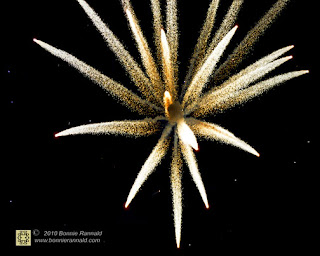
Catching the fireworks at the beginning of the exhibition is important, when there is less smoke and haze.

A trick of the trade, place a black velvet scarf or non-shiny object in front of the lens while the shutter is being held open between bursts, then quickly move it away to catch the next one. This allows you to get multiple fireworks in one exposure.
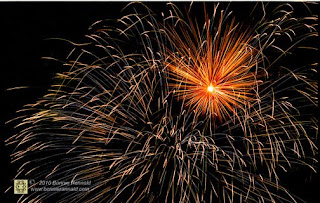
If you are using a point and shoot camera that does not have a fireworks setting, you can set it to Landscape mode (it is the small mountain range). With many point and shoot cameras, the Landscape setting works like setting the lens to Infinity.
I wish every one a happy and safe New Year's. I will see you back the following week of 2011!

What
an exciting and interesting photo-adventure this day has been. I love
it when I am drawn to an area and not knowing what to expect I get
treated to new experiences.
Sign up and follow my blog to see where my next photo-adventure will be!
Photography places me in the moment where I can share that moment in time. It becomes a life story as represented by my interaction with the scene. The happiness and beauty or the sorrow and strife; how I focus leaves a lasting impression that might touch the viewer on a spiritual level.
"Reflecting Nature's Artistry"
No images on this blog are within Public Domain or are available for free download.
All rights reserved, world-wide and images protected by Digital
Millennium Copyright Act (DMCA). All photography, graphics, text,
design, and content is copyrighted by Bonnie Rannald and should not be
copied, down-loaded, transferred and re-created in any way without the
express consent, in writing to Bonnie Rannald.
For information on Bonnie Rannald licensed, right-managed images, please
submit a written request.

Hey Bonnie, can any camera use a cable release? My little point-and-shoot has a trap door behind which is the input for the cord that transfers data to my computer. Next to it is a very small circular import that says DC in. Could that accept a cable release?
ReplyDeleteAnnie, the DC would be where your power cables connect to the camera. I would have to know the make and model of the camera to know if it has remote shutter release capability.
ReplyDelete